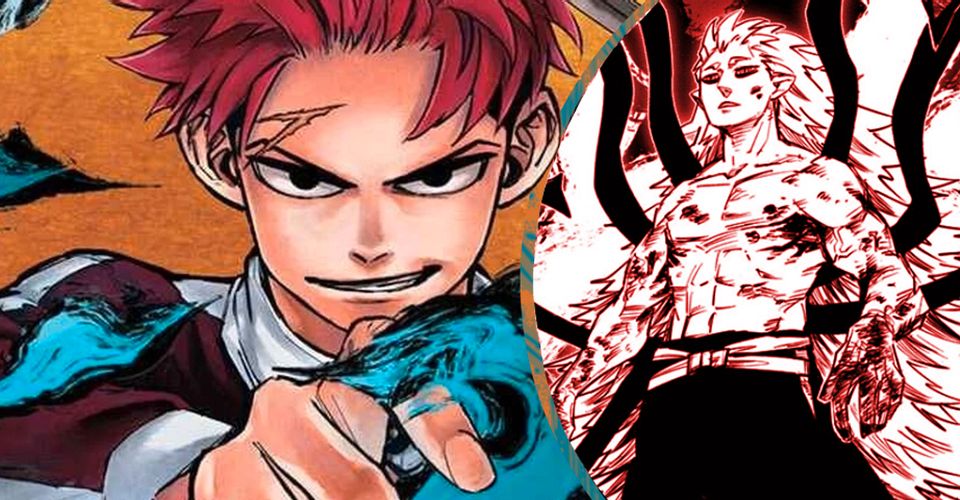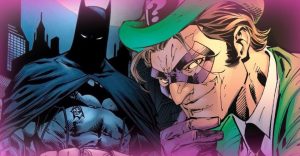Doron Dororon Finally Fixes Shonen Manga’s Most Wasted Narrative Tool

Warning! Spoilers ahead for Doron Dororon chapter 9!
Doron Dororon is using certain sound effects in a way that proves other shonen manga have been wasting this underrated narrative tool.
Particularly shrewd fans already know by now that the title Doron Dororon references onomatopoeias that only the series’ mononoke—or monsters—make at certain times. So far, they’ve occurred whenever a mononoke unleashes a strong attack, emits a powerful aura or when their supernatural energy fizzles out upon their death. But in chapter 9 of Doron Dororon by mangaka Gen Oosuka, readers with this knowledge just got shocked by what didn’t just make this noise, but even more so by what does.
By chapter 9, the hero Dora had just vanquished the mononoke of the Great Disaster aka Hanya Gyuuk. But from within its carcass emerges a humanoid mononoke with “mind-boggling supernatural power.” The fact there are apparently humanoid mononoke isn’t just new to readers but also to veteran samurai Ginchiyo Yagyu who has slain many of these monsters. When the human-like monster inevitably attacks Dora and Ginchiyo, readers immediately began reading the onomatopoeias written around his use of energy. But there are no traces of “Doron,” “Dororon” or any variation of the two words. Instead, there’s the stereotypical “vwaaas,” “vwshes” and “vwams.” But what’s especially troubling is that when Dora comes to Ginchiyo’s aide to block a powerful blast, he says the word “Doro…” complete in a darkened word bubble that’s usually used in manga to indicate a terrifying or monstrous voice.

The focus on these sound effects or onomatopoeias is providing Doron Dororon fans with additional tools to almost literally read between the lines. Even though the humanoid mononoke is obviously not the same as the usual monsters, the fact that he doesn’t make the typical sounds when unleashing a powerful attack lends readers to assume that he might actually wield a different power altogether—or might not actually be a mononoke after all. Dora himself originally thought that the mysterious character might have been eaten by Hanya Gyuuk and was therefore a victim. But the opponent’s words and later actions seemed to prove otherwise, though, him not making any “Doron” or “Dororon” sounds might lead some to infer that Dora may have not been so off in his original assessment.
But even more startling than this is that Dora actually says “Doro…” which creates the understandable impression that he might actually be transforming into a mononoke. This theory can be supported by the fact that he doesn’t possess the innate powers necessary to fight mononoke as a samurai, and yet he wields the actual power of these monsters whenever he brandishes his ally the mononoke Kusanagi as a sword like Naruto‘s Kisame. Could Dora’s lack of necessary samurai power be enabling Kusanagi’s energy to corrupt him? This particular trope where a hero’s bond with a monstrous entity leads to the hero becoming the actual monster is commonly used in manga and was even recently explored in the latest chapter of Kaiju No. 8. However, unlike Doron Dororon, Kaiju No. 8 tackles this phenomenon literally when the hero Kafka Hibino, who can transform into his world’s eponymous monsters, mentions how a portion of his hand has remained a kaiju, a process which scientists later refer to as kaijufication. Mangaka Gen Oosuka is obviously doing the same thing in essence except not so literally, which creates a stronger effect for readers who already made the connection chapters before.
Although Gen Oosuka will undoubtedly tackle Dora’s predicament literally, like in other manga, the use and heightened importance of onomatopoeias in Doron Dororon add an additional layer for fans to analyze, further enhancing the overall reading experience.
About The Author

















